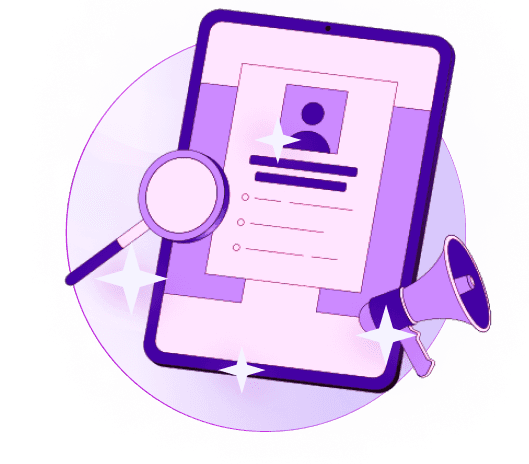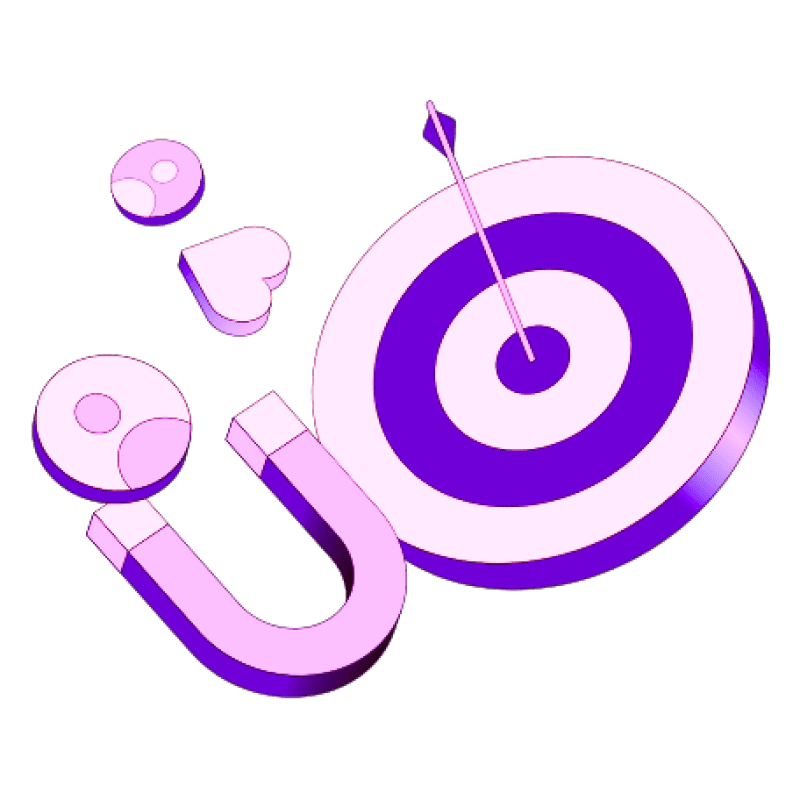Blogs
Articles

How to Set Up AI SDR Agents: A Step-by-Step Guide [With Real Results]
AI SDR agents are revolutionizing sales teams right now. Human SDRs currently spend over two-thirds of their time on tasks unrelated to selling.
Companies that use AI sales agents can process huge volumes of data. This helps them find the best times to reach out and personalize messages at scale. Their sales reps can now manage up to 20 qualified leads daily after AI handles the qualification process.
Setting up AI SDRs takes more than just pushing a button. Success demands careful planning at each step - from selecting the right platform to establishing handoff protocols for human reps. This piece offers a detailed roadmap to implement AI SDR technology in your sales process, complete with real-life results and practical tips for each phase.
What is an AI SDR Agent and Why It Matters
AI SDR agents are software tools that automate sales development tasks usually done by human representatives. These virtual assistants use artificial intelligence to handle prospecting, lead qualification, and reach out to prospects without much manual work.
Understanding the role of AI SDRs in modern sales
AI SDRs work as autonomous applications that analyze your sales and customer data with minimal human input. We focused on top-of-funnel activities like nurturing leads through email outreach. They answer questions, book meetings, and qualify prospects.
AI SDR agents learn from interactions and use data analysis to work better and make decisions on their own. They work around the clock and give attention to every lead, whatever the time zone or volume. They blend naturally with CRM systems and keep information current for sales teams.
AI SDR vs human SDR: Key differences
AI and human SDRs have some major operational differences:
Availability: AI SDRs work 24/7/365, while human SDRs typically work 8 hours per day
Scalability: AI agents reach out to unlimited prospects at once, while humans handle one at a time
Cost: AI SDRs cost approximately $833 per month compared to $6500-$9800 for human SDRs
Response time: AI responds in under 10 minutes versus human SDRs' average of 42 hours
Consistency: AI keeps quality uniform without getting tired or distracted
Human SDRs still excel at emotional intelligence. They understand cultural nuances better and build authentic relationships.
Benefits of using AI sales agents
AI SDRs bring impressive results for sales teams. Companies using AI see 83% revenue growth compared to 66% for teams without it. These agents process 10-15 times more leads than humans and manage up to 3,000 leads monthly.
AI SDRs schedule 15 meetings monthly while human SDRs book 10. Teams can cut costs and improve productivity since AI handles up to 80% of routine SDR tasks.
The best strategy combines AI and human strengths. AI takes care of evidence-based tasks while human SDRs focus on building relationships and handling complex conversations. This partnership creates a better pipeline generation process and keeps the personal touch needed for high-value deals.
Step-by-Step Setup of an AI SDR Agent
AI SDR agents need careful planning to work well. Here's a step-by-step guide that will help you add these virtual sales assistants to your current workflow.
1. Define your sales goals and SDR workflow
Start with a review of your sales process to spot time-consuming repetitive tasks. Your focus should be on lead qualification bottlenecks and follow-up gaps where AI can make the biggest difference. Your unique qualification criteria will help set clear pipeline goals that keep your AI SDR on track.
2. Choose the right AI SDR platform
Pick an AI SDR solution that matches your needs—whether you need outbound prospecting or inbound lead qualification. The platform should merge with your existing tech stack and tools. Great solutions come with industry-specific customization options and built-in skills to nurture and qualify leads.
3. Train the AI with your ICP and messaging
Your AI SDR needs training like any team member with company materials, website content, and product details. Build your Ideal Customer Profile (ICP) using firmographics (company size, industry, location), behavior patterns, and technographics (current tech stack). This knowledge will help your AI agent understand your target audience and talk to buyers smartly.
4. Integrate with your CRM and sales tools
Link your AI SDR to your CRM system for accurate data flow and better lead management. You'll need to connect email platforms, marketing automation tools, and unified communications systems. This setup logs all interactions automatically and stops outreach to existing customers or prospects.
5. Set up outreach sequences and follow-ups
Create multi-step campaigns that mix email, LinkedIn, and voice outreach. Your automated workflows should respond to prospect actions like email opens, website visits, or demo requests. AI Cadences can help you build tailored sequences quickly instead of spending 2-6 hours doing it manually.
6. Assign handoff rules for human reps
Create specific triggers for when AI should pass conversations to human reps. These might include particular interest signals or objections needing human expertise. Good handoff rules will automatically assign qualified leads to sales reps and schedule meetings in their calendars.
Top AI SDR Tools to Consider
The market has several powerful AI SDR tools. Each tool comes with capabilities that improve your sales outreach efforts. Let's get into five leading options that deliver impressive results.
Agent Frank
Agent Frank stands out as a complete AI SDR that automates the whole sales outreach process. The tool handles everything from prospecting to meeting scheduling with two modes—Auto-pilot for autonomous work and Co-pilot for supervised actions. Frank's learning capacity helps it get better by using your first-party data. This makes it more effective as time passes. The tool costs $499 per month and has features like individual-specific email sequences and 24/7 operation. Users report achieving a 21% positive reply rate, which matches high-performing human SDRs.
MeetChase AI
MeetChase AI works as a commission-based AI SDR that delivers results before you need to pay. The tool excels at guiding leads from cold outreach to confirmed calendar invites. Marketing professionals create handcrafted campaigns while machine learning optimizes them automatically. You'll pay $50 per meeting when providing leads or $60 per meeting with lead sourcing included.
Artisan (Ava)
Ava by Artisan works as a fully autonomous AI sales agent that finds leads, creates individual-specific outreach messages, and connects with prospects in various channels. The tool excels at mining data about prospects. This includes technographic, firmographic, and intent data to create highly individual-specific messages. Ava's self-optimization process sets it apart—it refines its approach based on response patterns continuously.
11x.ai
11x.ai presents "Alice," an AI SDR that handles the outbound process autonomously. Alice works 24/7 to identify ideal prospects by filtering millions of signals and creating highly individual-specific outreach. The platform shows impressive results: 30% more meetings per account executive and 80% improvement in meeting-to-opportunity conversion. Prices start around $5,000 monthly.
AiSDR
AiSDR focuses on increasing conversion rates through individual-specific, timely responses. The platform can respond to questions in under 10 minutes with access to over 700 million leads. It has automated follow-ups, lead qualification, and HubSpot integration for simplified processes. The service starts at $750 monthly and has 1,000 individual-specific emails with unlimited leads and mailboxes.
Real-World Results and Optimization Tips
Businesses are getting remarkable results by putting ai sdr agents into action. Let's get into what works and what doesn't in real-life applications.
Case study: How VTT used AI SDRs to qualify every lead
VTT Technical Research Center faced a big challenge. Their team generated about 4,000 leads yearly but couldn't process them well. Their human SDRs spent almost 1,000 hours each year qualifying leads. They reached less than half their prospects. The company turned to AI sales prospecting with Agentforce. They set up a low-code sales agent that connected with inbound leads right away. The agent answered questions using preloaded company information and managed to keep follow-ups going—even after hours. Now VTT connects with almost 100% of inbound leads. This lets their team focus on high-value conversations and research partnerships.
Common mistakes to avoid during setup
Data quality stands out as the top priority. Poor or outdated data will stop your AI SDR from working properly. Yes, it is true that rushing to implement without cleaning your database creates duplicates and irrelevant contacts. Many companies forget about the human touch. This makes interactions feel mechanical and cold. Teams need proper training on AI tools. Without it, they misread analytical insights and waste time on unqualified leads.
How to monitor and improve AI SDR performance
These metrics help measure your ai sales agent's success:
Response rates: Monitor timing, personalization, and subject line effectiveness
Lead qualification accuracy: Track MQL to SQL progression
Pipeline velocity: Measure how quickly leads move through your funnel
Affordable solutions: Compare AI SDR costs against human SDR expenses
The best AI SDRs learn and adapt over time. This helps make future campaigns better based on previous results.
When to escalate to human SDRs
Knowing the right time to hand off conversations is vital. Your human reps should step in when prospects show strong buying signals or ask for detailed conversations. AI SDRs must know their limits. Complex product questions, pricing negotiations, and relationship-building opportunities need human involvement.
Conclusion
AI SDR agents offer sales teams a chance to expand their operations at lower costs. The numbers tell a compelling story - teams with AI achieve 83% revenue growth compared to 66% for those without it.
Anyone can follow this simple roadmap to implement AI SDR agents. Define your sales goals first. Pick a platform that fits your needs. Feed quality data to train your AI. Connect it with your existing tools. Design effective outreach sequences. Set clear rules for handing off leads to human reps.
AI agents produce great results but work best alongside human teams. Human SDRs excel at building relationships and managing complex discussions. The most effective teams use AI for data-intensive tasks while their human reps handle valuable interactions.
Want to enhance your sales process with AI SDR technology? Visit Persana.ai to find solutions that match your business needs.

Create Your Free Persana Account Today
Join 5000+ GTM leaders who are using Persana for their outbound needs.
How Persana increases your sales results
One of the most effective ways to ensure sales cycle consistency is by using AI-driven automation. A solution like Persana, and its AI SDR - Nia, helps you streamline significant parts of your sales process, including prospecting, outreach personalization, and follow-up.



